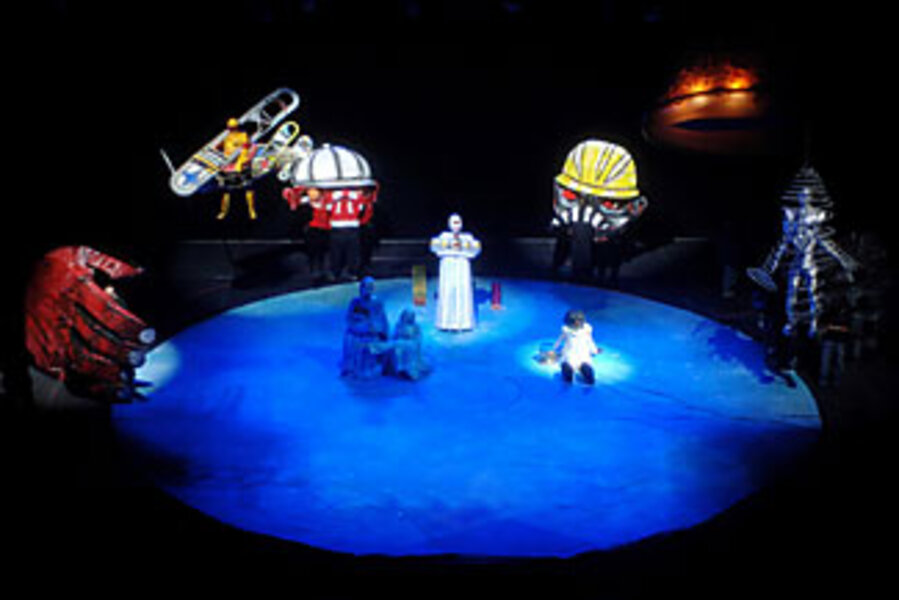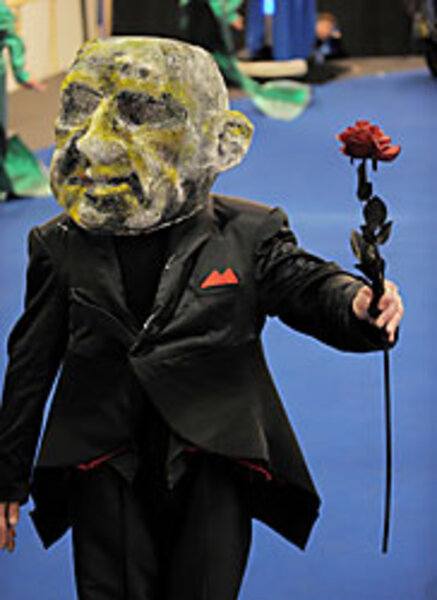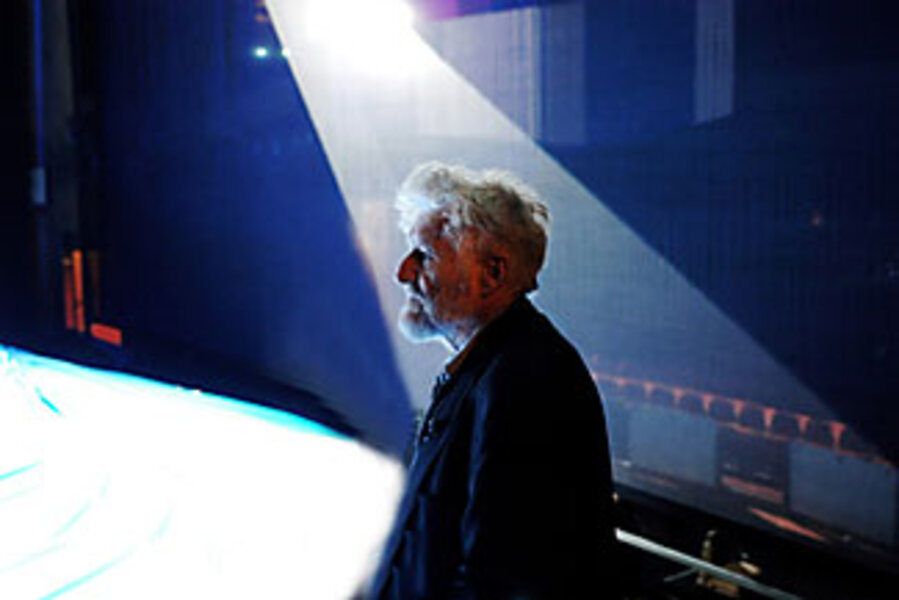L.A. comes of age with opera giant
Loading...
| Los Angeles
Standing in the darkened wings of the Dorothy Chandler Pavilion, where the Los Angeles Opera is readying its upcoming production of "Das Rheingold," it's easy to feel the vastness of a Wagner opera. As the dress rehearsal progresses, singers bustle on and offstage in outsized, wildly decorated costumes.
The stage, raked up to nearly 11 feet, looms over the performers. And an 80-foot scrim spans the front of the stage to allow such startling effects as a sheer wall of blood to slowly wash down from the ceiling.
Then, of course, there's the music, 14 hours in the four operas that comprise Wagner's masterwork known as the Ring Cycle. The company plans to present the entire quartet over the next 14 months in preparation for "Ring Festival L.A.," a two-and-a-half-month, citywide Wagner-themed celebration involving more than 50 arts and cultural organizations.
The company's general director, Placido Domingo, calls the $32 million Ring Cycle "audacious." City leaders and opera watchers say the festival – the first of its kind – is an important moment for the nation's second-largest city. "L.A. has come of age when it comes to the arts," says L.A. County supervisor Zev Yaroslavsky. "We couldn't ask for a better way to punctuate the last decade."
Says OPERA America president Marc Scorca, "L.A. has made great strides in the past two decades in becoming a major cultural center of gravity, and this ring festival adds substance to that."
No doubt, Richard Wagner himself would have appreciated the scale of these giddy pronouncements. His own music has been called one of the pinnacles of Western culture and a definitive launchpad for 20th-century classical music – not to mention popular entertainment.
"It is nearly impossible to overestimate the impact of Wagner's operas on Western culture," says Ralph Locke, professor of musicology at the University of Rochester's Eastman School of Music. Wagner's extensive exploration of musical motifs in connection with action unfolding on stage, as well as his expansion of orchestral sounds that paved the way for modern tonal pioneers, influenced composers around the world, Mr. Locke says. Beyond that, his ideas have influenced film scores from their earliest silent-film days, when accompanists often overplayed the relationship between the music and the film action. Look no further than the film version of "The Lord of the Rings," he adds, for further evidence of Wagnerian influence. "The film's composer, Howard Shore, uses highly characterized themes and colors for the different characters and their temptations and travails."
There is no worldwide shortage of Wagner operas. New York's Metropolitan Opera regularly presents the whole work, and Seattle Opera will mount a Ring Cycle this summer. But the arrival of a new version always causes a stir among the global fan base, an occasionally over-the-top group of passionate Wagner followers who travel the world to take in the latest rendition.
Indeed, while festival organizers clearly hope to educate the locals, it is the economic potential of this international fan base they hope to exploit. Local philanthropist and relentless hometown cheerleader Eli Broad donated $6 million in seed money for the Ring Cycle and hopes to tap into this tourism bonanza. In conjunction with the Los Angeles Economic Development Corporation, his own foundation conducted a study several years ago which suggested that if the 2.5 million cultural tourists visiting L.A. annually doubled, the region would gain 10,000 new jobs, $55 million in tax revenues, and an overall $1 billion in economic impact. "L.A. is one of the world's great cultural centers," says Mr. Broad. "This festival has the potential of introducing L.A. to the rest of the world."
No arm-twisting is necessary for Colorado minister and composer Chris Mohr. He is a former "Ring leader" in his local Wagner Society, a phrase he coined for his own passionate commitment. He and his wife like to get a "Ring fix" every seven or eight years, he says. "We already have our tickets for Los Angeles."
Retired Tennessee farmer and journalist Jim Leeson says he would make the trip if he could still travel. In his heyday, he says, he twice made the pilgrimage to the Bayreuth Festival in Germany, the one designed by Wagner himself. He describes the experience of entering the Wagner-conceived opera house in reverential tones.
"They sent us down these rows of seats with no aisles, then the huge side doors shut with a whoosh and they slid these huge curtains over them to block any light," he says. "Then the music began to come from an orchestra that you couldn't see because it's buried under the stage. It's really dramatic, like entering a whole other world."
While the L.A. Opera resides in the 45-year-old multiuse pavilion, music director James Conlon hopes to capture that transformational sense. The orchestra pit will be covered, as it is in the Bayreuth Festival house. The production design is not anchored in any specific time or place, but hews closely to what Mr. Conlon calls the composer's original desire to create a world of classic, mythic power on the scale of the great legends. "Timelessness is not just a component of Wagner's intentions," he says, "but integral to its essence."
Whether in mythic or everyday terms, the Ring Cycle is like no other opera to produce, says Seattle Opera general director Speight Jenkins. The sheer scale of the undertaking means, "things happen that just don't happen with other operas," Mr. Jenkins says. He recalls the flying Rhinemaidens in his "Das Rheingold" production. One of the singers had eaten some bad seafood and simply couldn't mount the flying harness for the debut of the first opera. After a last-minute scramble, the company's assistant director gamely substituted herself in the aerial contraption while the singer sang the role from behind the scenes.
The venture is financially and artistically ambitious for any opera company, says Michael Steinberg, director of the Cogut Center for the Humanities at Brown University in Providence, R.I. "It's not only a great work of art," he says, "but it is disruptive, psychologically important, and even potentially dangerous." Indeed, in Israel public performances of Wagner are still unofficially banned because of the close association between his music and Hitler's Nazi Germany. But, says Mr. Steinberg, the work transcends the politics of any period.
A major production of the Ring Cycle is long overdue for a city of L.A.'s size and importance, Conlon says. He expects the experience to stretch every muscle the company has, from orchestra to singers and stagecraft. "But when it's over," he adds, "everything else will seem easy."







